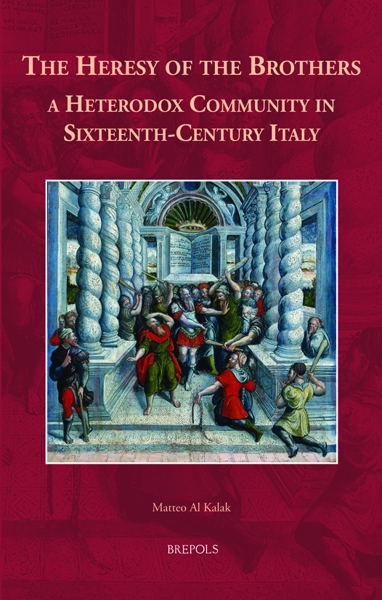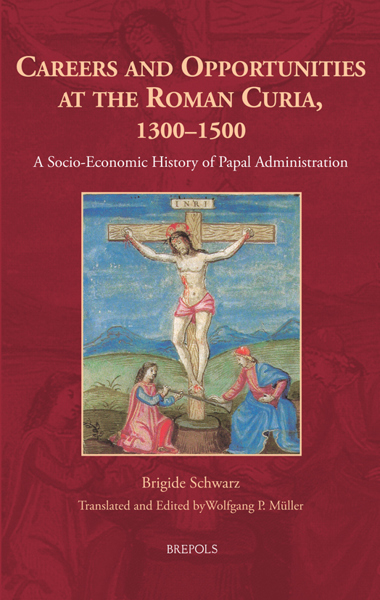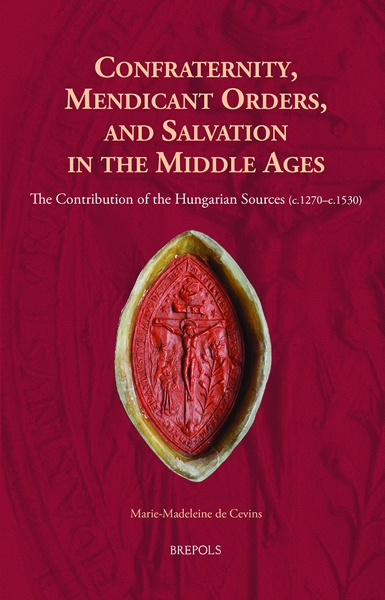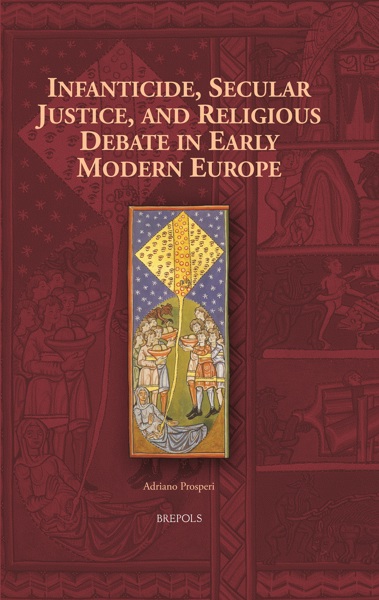
Brigide Schwarz
Careers and Opportunities at the Roman Curia, 1300–1500
A Socio-Economic History of Papal Administration
Wolfgang Mueller (ed)
- Pages: 337 p.
- Size:156 x 234 mm
- Illustrations:9 b/w, 8 tables b/w., 1 maps b/w
- Language(s):English
- Publication Year:2024
- € 95,00 EXCL. VAT RETAIL PRICE
- ISBN: 978-2-503-59538-2
- Hardback
- Available
- € 95,00 EXCL. VAT RETAIL PRICE
- ISBN: 978-2-503-59539-9
- E-book
- Available
Explores administration and career building at the late medieval and Renaissance papal court.
"Brigide Schwarz is a great role model. She combined the highest degree of technical expertise in the use of documents with a discreet use of social theory as a source of questions to put to sources. She analyses and explains rather than preaching and moralizing. The workings of the papal curia and its relation to the localities are not easy to understand and her work makes it a lot more accessible." (David L. d’Avray,in Francia-Recensio, 2025/2)
"Brigide Schwarz's essays, brought together in this masterfully translated and curated volume, offer not only a prosopographical treasure trove but a reconceptualization of the late medieval curia as a socio-economic system. Her work bridges the gap between bureaucratic functionality and human ambition, showing how clerics and officers navigated power structures through intellect, strategy, and social capital. (...) For historians of the Church, of institutions, and of labor and mobility, this volume is an indispensable model of archival acumen and historical imagination." (Joëlle Rollo-Koster, in Sehepunkte, 25, 7/8, 2025)
"These studies, though only a sample, are a fitting memorial to a distinguished scholar. Based on detailed knowledge of papal and local records and prosopography, they mostly target a specialist audience. But Schwarz’s work (...) deserves a wider readership. The emphasis on integrating central and local perspectives and on attention to context and personal connection corrects the tendency to read off history from theory and from chroniclers’ narratives." (Peter McDonald, in Parergon, 42/1, 2025, p. 236)
"The book’s editor and translator, Wolfgang P. Müller, explains that Schwarz’s work is largely unknown outside German scholarship. (...) Müller has acted not only as a translator, but as an unusually interventionist editor: explaining or even replacing some technical vocabulary, rewriting what often had appeared as bullet points into clearer, less compressed form, and so on. Readers should be grateful to Müller for these efforts as well as the more usual work of translation. (...) Historians concerned with ecclesiastical, and even non-ecclesiastical, administration, including its social history, will find real rewards in this book." (Michael Burger, in The Medieval Review, October 2025)
Born in 1940, Brigide Schwarz was Ordinary Professor of Medieval History at the Technical University of Hanover (Germany) from 1979 to 1998. Until her death in 2019, she was the leading expert in a field that has no real equivalent in Anglophone scholarship, perhaps best defined as the Socio-Economic History of the Late Medieval Papal Court (or Curia).
Brigide Schwarz (1940–2019), a leading German historian of the Renaissance papacy, is presented here for the first time in a dossier of ten previously untranslated scholarly studies.
The volume brings the mechanisms of late medieval career building back to life. Success among churchmen was measured in access to ever more lucrative ecclesiastical endowments (or benefices). As the fifteenth century progressed, their treatment assumed highly monetized and abstract dimensions. Guided by Dr Schwarz, economic historians can discern many transactions that foreshadow the asset management of present-day Wall Street.
From the 1400s, administrative positions at the papal court (or Curia) were increasingly auctioned off. This created a marketplace for bidders expecting returns by way of ‘creative’ fee regulations or through the cornering of services in monopolies.
Only recently, scholarship has begun to question older depictions of the late medieval Church as one of decay and moral corruption. Dr Schwarz points to the ‘modernity’ of the fiscal arrangements which nation states like France soon copied as an efficient model of public financing.
Editor’s Introduction
Part I – Ecclesiastical Benefices
Chapter 1. The Roman Curia and the Late Medieval Benefice Market
Chapter 2. Patronage and Clientele in the Late Medieval Church. The Example of Nicholas of Cusa
Chapter 3. A ‘Rope Team’ of Clerics from Hanover in the Late Middle Ages
Chapter 4. On Nanker, Bishop of Kraków (1320-1326) and Wrocław (1326-1341)
Chapter 5. The Vatican Archives and Their Uses for Regional Historians. The Example of Late Medieval Saxony
Part II – Curial Offices
Chapter 6. The Venality of Offices. An Institution from the Period of Absolutism and its Medieval Roots
Chapter 7. The Roman Curia from the Great Schism to the Reform Councils (1378-1447)
Chapter 8. On Behalf of the Pope. The Papal cursores from 1200 to about 1470
Chapter 9. Leon Battista Alberti’s Career in the Apostolic Chancery
Chapter 10. Position and Rank of the Vice-Chancellor at the Curia
Bibliography
Index




